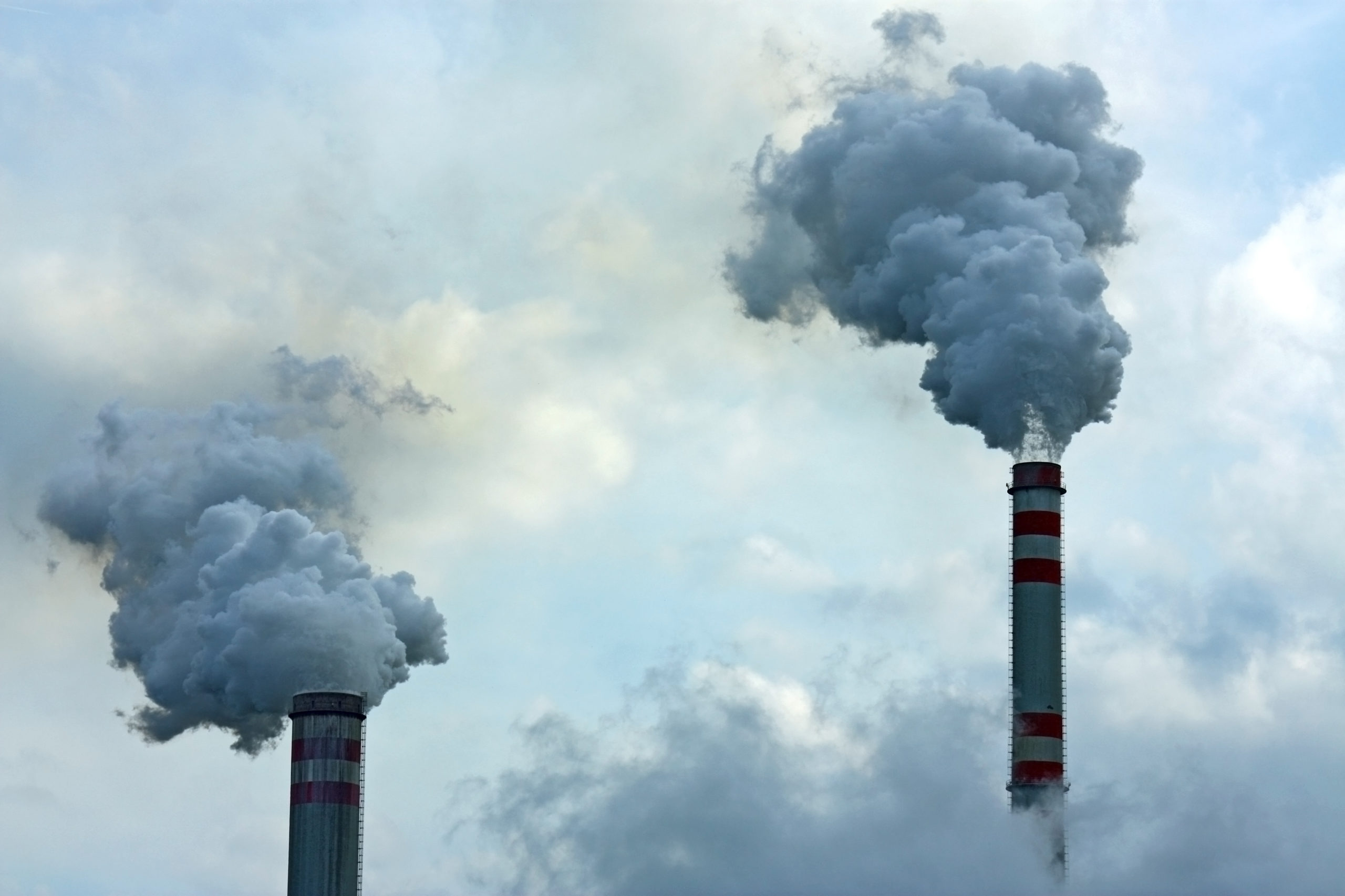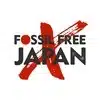
Under the administration of Prime Minister Fumio Kishida, discussions are underway on “Green Transformation (GX)” to realize a decarbonized society1. In order to accelerate GX not only in Japan but also overseas, especially in developing countries in Asia, the Japanese government will host “Tokyo GX Week” from September 26 to discuss new fuels such as hydrogen and ammonia, carbon capture and storage (CCS), and LNG.
The climate crisis is an urgent issue. Heavy rains since June 2022 have caused devastating damage to Pakistan, with one third of the country submerged underwater. As the impact of the global climate crisis intensifies, we need to end our dependence on fossil fuels. But the Japanese government’s GX strategy, which includes “false solutions”, will only delay decarbonization. For example, hydrogen and ammonia co-firing in existing thermal power generation infrastructure is a prime example of false solutions, as it can only prolong the life of fossil fuel infrastructure.
We, the undersigned civil society groups, strongly call on the Japanese government to stop forcing superficial measures against climate change to Asia and other countries and instead to provide assistance that is consistent with the goals of the Paris Agreement, sustainable and based on communities’ needs.
Hydrogen/Ammonia co-firing increases dependence on fossil fuels
While hydrogen and ammonia do not emit greenhouse gases when they are burned, they emit large amounts of greenhouse gases during their production and transportation. Commercial ammonia production methods currently in use are made from fossil fuels such as gas. Even with the most advanced equipment, approximately 1.6 tons of CO2 is emitted to produce 1 ton of ammonia. Similarly, hydrogen is hardly a “decarbonized” fuel, as most of it is made from fossil fuels2. In other words, the greenhouse gas emission reduction effect of mixed combustion of hydrogen and ammonia is quite limited. Furthermore, researchers have found that blue hydrogen co-firing can produce more greenhouse gas emissions than conventional gas-fired power generation3. In addition, the promotion of co-firing of hydrogen and ammonia leads to prolonging the lifespan of existing thermal power generation. Currently, there is little green hydrogen and ammonia produced using renewable energy4.
The biggest obstacle to the production and securing of green hydrogen and ammonia or blue hydrogen and ammonia, produced with CCS facilities5, is the high cost6. There is no reason to promote the co-firing of hydrogen and ammonia, which are far less effective in reducing CO2 emissions, compared with renewable energy, whose costs are decreasing year by year. The Japanese government’s committee on those fuels also pointed out the high costs of blue/green hydrogen and ammonia production and power generation. The initial investment requires a lot of money, and fuel and operating costs are also high. As the introduction of hydrogen cannot proceed at this rate, discussions are underway to create demand by building a large-scale supply chain by supporting the introduction of gray hydrogen and ammonia produced from fossil gas and brown hydrogen produced from coal7.
The Japanese government is actively promoting the use of blue hydrogen and ammonia derived from fossil fuels in developing countries, instead of green hydrogen and ammonia produced from renewable energy.
In Indonesia, Japan is supporting hydrogen, ammonia fuel, and CCS/CCUS in order to achieve “realistic energy transitions”, according to the Memorandum of Cooperation signed by both governments early this year8. More specifically, the Japan International Cooperation Agency (JICA) has developed a roadmap for achieving carbon neutrality by 2060. To achieve the roadmap, it has proposed positioning ammonia, hydrogen, and LNG (with CCS) as the three main fuels, prioritizing support for ammonia and biomass co-firing at existing coal-fired power plants in the short term, and hydrogen thermal power (assuming dependence on imported gas for hydrogen) accounting for a large proportion of the power source mix after 20519. Japanese companies have already announced feasibility studies to be conducted in Indonesia one after another10.
JICA is currently providing technical assistance to the Government of Bangladesh through ODA (Official Development Assistance) for the development of the Integrated Energy and Power Master Plan. Both scenarios are planned to introduce large-scale thermal and gas-fired power generation using mixed combustion of hydrogen and ammonia. It is also based on unrealistic assumptions, such as the introduction of coal-fired power generation using 50% ammonia combustion around 2030. The estimated introduction of renewable energy is also underestimated compared to other JICA survey reports.
Since a shift to solely hydrogen and ammonia combustion is not expected in the short term, co-firing with existing thermal power generation will be the main use of hydrogen and ammonia for the time being. CCS, which is a prerequisite for the use of blue hydrogen and ammonia, has rarely been commercialized, and problems such as high cost and incomplete CO2 recovery have been pointed out11. In other words, the Japanese government’s promotion of hydrogen and ammonia will not support decarbonization, and will delay the transition from fossil fuels in developing countries.
Hydrogen, ammonia, and CCS will not reduce greenhouse gas emissions and are riddled with economic and technological uncertainty. Supporting these fuels and technologies as necessary for the energy transition is nothing less than the imposition of false solutions. The Japanese government, therefore, should immediately stop it. Furthermore, it is necessary to avoid extending the lifespan of existing coal-fired power plants, which have imposed environmental and social costs to impacted communities, including health damage and adverse effects on livelihoods, such as agriculture and fisheries.
LNG is not a “Transition Energy”
Japan’s support for LNG expansion poses considerable risks to decarbonization, energy security, and environmental protection. The Japanese government seeks to create greater LNG supply chains in Asia, and is supporting an LNG conference during GX Week.
In expectation of securing Japan’s presence in the expanding gas market, the Japanese government has promoted the creation and expansion of the LNG market in Asia, hosted the LNG Producer-Consumer Conference, and announced financial and human resource development assistance of tens of billions of dollars12. While these efforts are being made in the name of Japan’s energy security, promoting fossil fuel gas in the Asian region not only contradicts climate change measures, but also makes the energy supply of Asian countries, including Japan, even more unstable given currently soaring gas prices.
Climate science suggests that coal-fired power plants, which emit the most CO2 of all electricity sources, should be decommissioned by 2030 in developed countries and by 2040 in other countries. Not only coal, but also fossil fuel production itself should be reduced. The IPCC estimates that the fossil fuel infrastructure currently in operation and planned to operate for an expected years of operation would alone produce enough CO2 to cause global temperatures to rise by more than 2°C13. Gas has been promoted as a “bridge fuel” because it emits less CO2 when it is burned compared to coal. In light of climate science, however, there is no room for new fossil fuels, including gas.
According to the think tank Carbon Tracker, estimates based on the IPCC’s 1.5 °C Special Report show that all the unabated gas-fired power plants need to be phased out by 2045, while developed countries need to do so before then14. Therefore, there is a high possibility that investment in these projects will not be recovered and they will become stranded assets.
Moreover, methane, a major component of gas, has been underestimated in its contribution to global warming15. As 40% of anthropogenic methane emissions come from energy sources16, the use of fossil fuels must be reduced from the perspective of methane emission reduction.
LNG is also a problem from the standpoint of energy security. According to the Institute for Energy Economics and Financial Analysis (IEEFA), gas shortages are occurring in Asian countries with low purchasing power following LNG demand and price surges after the Russian invasion of Ukraine17.
The government of Bangladesh is working to convert plans for the shelved Matabari 2 coal-fired power generation project to gas-fired power generation using imported LNG18. But according to IEEFA’s analysis, Bangladesh’s electricity is already oversupplied, and there is a risk that the construction of new fossil fuel-fired power plants could have a serious impact on Bangladesh’s financial status and electricity costs19. If LNG thermal power generation capacity increases, there is a risk that gas prices will rise further due to increased exposure to the volatile LNG market. In fact, the Bangladeshi government was forced to pay record LNG spot prices in 2021, and gas suppliers submitted a proposal to the Bangladesh Energy Regulatory Commission (BERC) to more than double their gas tariffs.
Further, we cannot ignore the environmental and social problems caused by the LNG development. The Japan Bank for International Cooperation (JBIC) and Osaka Gas are investing in the development of the Ilijan LNG import terminal project in Batangas, Philippines. Alarms have been raised over the adverse effects on rich marine ecosystems in the Verde Island Passage (VIP), known as the “the Amazon of the Oceans,” by the project20. In addition, there have been reports of environmental destruction and human rights violations against indigenous peoples in many gas development projects that have been promoted overseas by the Japanese public and private sectors. Japanese public and private investments in gas projects not only delay the transition, but also put local residents and the environment at risk.
Large amounts of Japanese public money have been invested in fossil fuel infrastructure
Although Japan’s public support for coal-fired power generation has attracted attention, the amount of public funds invested in gas and oil is among the largest in the world. Between 2018 and 2020, Japan provided at least $10.9 billion a year ($188 billion in total) to oil, gas and coal projects, according to Oil Change International and FoE U.S. data. This government-backed financing of fossil fuels through public financial institutions abroad was more than eight times larger than Japan’s international assistance for renewable energy, which averaged $1.3 billion per year. From 2012 to 2020, Japan was the largest lender for fossil fuels21.
Furthermore, “the Law Concerning the Japan Oil, Gas and Metals National Corporation” was revised in May 2022. In addition to promoting renewable energy such as offshore wind and geothermal development, the scope of JOGMEC’s work now also includes promoting the use of hydrogen, ammonia, and CCS22. JBIC, a Japanese public financial institution, is also expanding its support to hydrogen and ammonia projects not only in developing countries but also in developed countries. However, since no attention is paid to the production method of ammonia or hydrogen, we are deeply concerned that more money will be invested in fossil fuel development23,24.
Support to phase out from fossil fuels
In the communique adopted at the 2022 G7 Summit, the G7 leaders conditionally committed to ending new international public support for the unabated fossil fuel energy sector by the end of 202225,26. However, we are concerned that the Japanese government intended, at first, to continue its public support for new overseas coal fired power projects even after 2022, despite the commitments made at the G7 Summit in 2021 to end such public support by the end of 2021.
It is also critical to pay close attention to the interpretation and implementation of the communique by the Japanese government regarding the suspension of public support for all new fossil fuel energy projects abroad. As with coal-fired power generation, the Japanese government should not misinterpret the word “new,” and should not include the hydrogen and ammonia co-firing technology, which it is currently promoting overseas, as part of its decarbonizing measures.
Climate change is a matter of urgency. We urge the Government of Japan to stop promoting false solutions such as hydrogen, ammonia co-firing, gas and CCS in developing countries and instead promote sustainable measures that meet the needs of recipients of support, consistent with the goals of the Paris Agreement.
Note 1:
As transition assistance for developing countries, the Japanese government announced the Asia Energy Transition Initiative (AETI) at the ASEAN-Japan Business Week held in May 2021. This includes support for developing countries to develop energy transition roadmaps, $10 billion in financing for renewable energy and energy conservation, LNG and other projects, and knowledge sharing through the Asia CCUS Network.27
Note 2:
Prime Minister Kishida made a speech at the Conference of the Parties to the United Nations Framework Convention on Climate Change (COP 26) in 2021, saying, “Since solar power plays a major role in the transition to renewables in Asia, to help stabilize electrical frequency in the region, converting existing thermal power generations into zero-emission power generation is a necessary path. To this end, Japan, through the Asia Energy Transition Initiative, will develop leading projects worth 100 million USD to transform fossil-fuel-fired thermal power into zero-emission thermal power such as ammonia and hydrogen”28. In response, the Climate Action Network International (CAN-I) awarded Japan the Fossil of the Day award (a dishonorable award for a country that is backward-looking in its approach to climate change) for encouraging fossil fuel dependency29.
Initial signatories:
Friends of the Earth Japan
350.org Japan
Japan Center for a Sustainable Environment and Society (JACSES)
Mekong Watch
Kiko Network
Endorsed by
(Regional/International)
Asian Peoples Movement on Debt and Development
Oil Change International
350.org Asia
Mighty Earth
(Australia)
Friends of the Earth Australia
(Bangladesh)
Bangladesh Adivasi Samity
Bangladesh Bacolight Shramik Federation
Bangladesh Bhasaman Nari Shramik
Bangladesh Bhasaman Shramik Union
Bangladesh Bhumiheen Samity
Bangladesh Jatra Sabha
Bangladesh Jatyo Shramik Federation
Bangladesh Kishani Sabha
Bangladesh Krishok Federation
Bangladesh Rural Intellectuals’ Front
Bangladesh Sangjukto Shramik Federation
Bangladesh Shramik Federation
Charbangla Bittoheen Samobay Samity
Emarat Nirman Shramik Bangladesh
Ganochhaya Sanskritic Kendra
Jago Bangladesh. Garment Workers’ Federation
Motherland Garment Workers’ Federation
Ready Made Garment Workers’ Federation
Bangladesh Poribesh Andolon
(U.K.)
Friends of the Earth England, Wales and Northern Ireland
(France)
Les Amis de la Terre France
(Georgia)
The Greens Movement of Georgia/FoE Georgia
(Indonesia)
AEER
Trend Asia
WALHI
WALHI Jawa Barat
(Mexico)
Otros Mundos Chiapas/Amigos de la Tierra México
(Pakistan)
Pakistan Fisherfolk Forum
(Philippines)
350 Pilipinas
Center for Energy, Ecology and Development (CEED)
Oriang Women’s Movement Philippines
Philippine Movement for Climate Justice (PMCJ)
Legal Rights and Natural Resources Center-Friends of the Earth Philippines
(South Korea)
Korea Federation for Environmental Movement
(Sweden)
Jordens Vänner / Friends of the Earth Sweden
(U.S.)
Friends of the Earth US
(Vietnam)
ActionAid International Vietnam
***
Footnotes:
- Prime Minister’s Office, GX Executive Meeting, Aug 24 2022, https://japan.kantei.go.jp/101_kishida/actions/202208/_00018.html
- Kiko Network, “Position Paper: Challenges of Hydrogen and Ammonia”, Oct 2021, https://beyond-coal.jp/beyond-coal/wp-content/uploads/2021/10/posision-paper-hydrogen-ammonia_english_revised220121.pdf
- Robert W. Howarth,Mark Z. Jacobson, ”How green is blue hydrogen?”, Aug 12th 2021, https://onlinelibrary.wiley.com/doi/full/10.1002/ese3.956
- According to IEA, only less than 0.03 % of hydrogen produced in 2020 were made through water electrolysis. IEA, “Global Hydrogen Review 2021” , Nov 2021 https://iea.blob.core.windows.net/assets/5bd46d7b-906a-4429-abda-e9c507a62341/GlobalHydrogenReview2021.pdf
- Generally, hydrogen and ammonia produced from renewable energy sources are called “green,” those produced from fossil fuels using CCS are called “blue,” and those produced without CCS are called “gray” or “brown” (from coal).
- IEA, “Global Hydrogen Review 2021” , Nov 2021 https://www.iea.org/reports/global-hydrogen-review-2021/executive-summary
- For example, see the discussion by Subcommittee on Hydrogen policy or Sub committee on decarbonizing fuel including ammonia https://www.meti.go.jp/shingikai/enecho/shoene_shinene/suiso_seisaku/pdf/001_03_00.pdf (Available only in Japanese)
- “Memorandum of Cooperation between the Ministry of Economy, Trade and Industry of Japan and the Ministry of Energy and Mineral Resources of the Republic of Indonesia on the Realization of Energy Transitions”, Jan 2022 https://www.meti.go.jp/press/2021/01/20220113003/20220113003-1.pdf
- JICA, “Data Collection Survey on Power Sector in Indonesia for Decarbonization”, Mar 2022 https://libopac.jica.go.jp/images/report/12342481.pdf
- For example, a feasibility study by Mitsubishi Heavy Industries, Ltd. and others on ammonia co-firing at a coal-fired power plant in Suralaya, Banten, https://www.mhi.com/news/220607.html
- Renewable Energy Institute, “Bottlenecks and Risks of CCS Thermal Power Policy in Japan”, May 2022 https://www.renewable-ei.org/en/activities/reports/20220520.php
- METI, New International Resource Strategy, Mar 2020 https://www.meti.go.jp/english/press/2020/0330_005.html
- IPCC ”Climate Change 2022 Mitigation of Climate Change, Summary for Policy Makers” (AR6 WG3), 2022
- Climate Analytics, “Fossil gas: a bridge to nowhere”, Jun 2022
- https://www.nature.com/articles/s41560-022-01060-3
- IEA, Global Methane Tracker 2022 Overview, Fb 2022, https://www.iea.org/reports/global-methane-tracker-2022
- IEEFA, The Economic Case for LNG in Asia is crumbling, Aug 15 2022 https://ieefa.org/resources/economic-case-lng-asia-crumbling
- The Daily Star, “Matarbari plant: Govt won’t implement phase-2 Japan cancels funding”, Jun 23 2022, https://www.thedailystar.net/news/bangladesh/news/matarbari-plant-govt-wont-implement-phase-2-3054276
- IEEFA, ”Bangladesh Power Development Board Financial Results FY2020-21 Growing Independent Power Plant Costs Threaten to Overwhelm Power System”, Feb 11 2022, https://ieefa.org/articles/ieefa-bangladesh-rising-cost-ipps-and-further-dependence-imported-fossil-fuels-threatens
- “Protect VIP” https://www.protectvip.org/
- Oil Change International and FoE U.S., “Past Last Call: G20 public finance institutions are still bankrolling fossil fuels”, Oct 28 2021, https://priceofoil.org/2021/10/28/past-last-call-g20-public-finance-institutions-are-still-bankrolling-fossil-fuels/
- JOGMEC, “JOGMEC’s functional enhancement and name change due to revision of the Law”, May 20, 2022 (Available only in Japanese) https://www.jogmec.go.jp/news/release/news_10_00022.html
- JBIC, “Announcement and Enforcement of the “Cabinet Order for Partial Revision to the Enforcement Order of the Japan Bank for International Cooperation Act””, Jun 30 2022, https://www.jbic.go.jp/en/information/news/news-2022/0630-016517.html
- The similar revision was made regarding hydrogen. Ministry of Finance, “Cabinet Order for Partial Revision to the Enforcement Order of the Japan Bank for International Cooperation Act”, Jan 2020 (Available only in Japanese) https://www.mof.go.jp/policy/international_policy/economic_assistance/jbic/jbic_houdou_200129.htm
- In general, emissions reduction measures refer to CCS, but the Japanese government claims that mixed combustion of ammonia and hydrogen can also be a possible measure. For more information, please see at “Joint Statement: Japanese government should recall its interpretation of OECD rules on coal – official support should not be provided for ammonia co-firing”, February 25, 2022 http://jacses.org/en/314/, Also, IPCC AR6 (WG3) states that ” ‘unabated fossil fuels’ refers to fossil fuels produced and used without interventions that substantially reduce the amount of GHG emitted throughout the life-cycle; for example, capturing 90% or more from power plants,”
- G7 Leaders‘ Communique, June 28, 2022 https://www.mofa.go.jp/mofaj/files/100364051.pdf
- METI, “Minister Kajiyama announced the Asia Energy Transition Initiative (AETI)”, May 28, 2021 https://www.meti.go.jp/english/press/2021/0528_002.html
- UNFCCC, “COP26 World Leader’s Summit Statement by Prime Minister KISHIDA Fumio”, Nov 2 2021, https://unfccc.int/sites/default/files/resource/JAPAN_cop26cmp16cma3_HLS_EN.pdf
- CAN International, “FOSSIL OF THE DAY 02 NOVEMBER 2021 – NORWAY, JAPAN AND AUSTRALIA”, Nov 2 2021, https://climatenetwork.org/resource/fossil-of-the-day-02-november-2021/
***
Contact:
Yuki Tanabe, Japan Center for a Sustainable Environment and Society (JACSES), tanabe@jacses.org
Ayumi Fukakusa, Friends of the Earth Japan, fukakusa@foejapan.org
***
PDF file here

